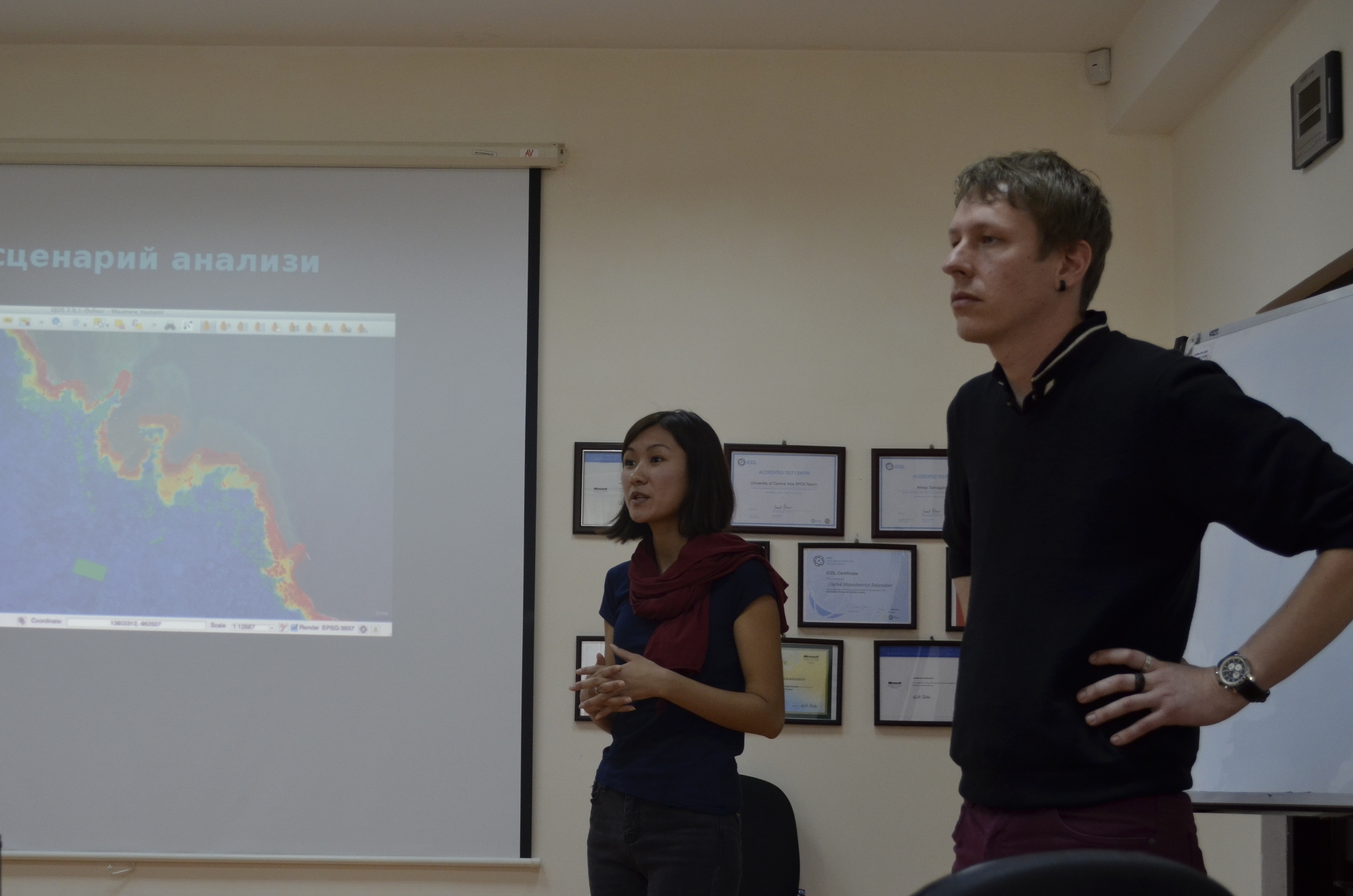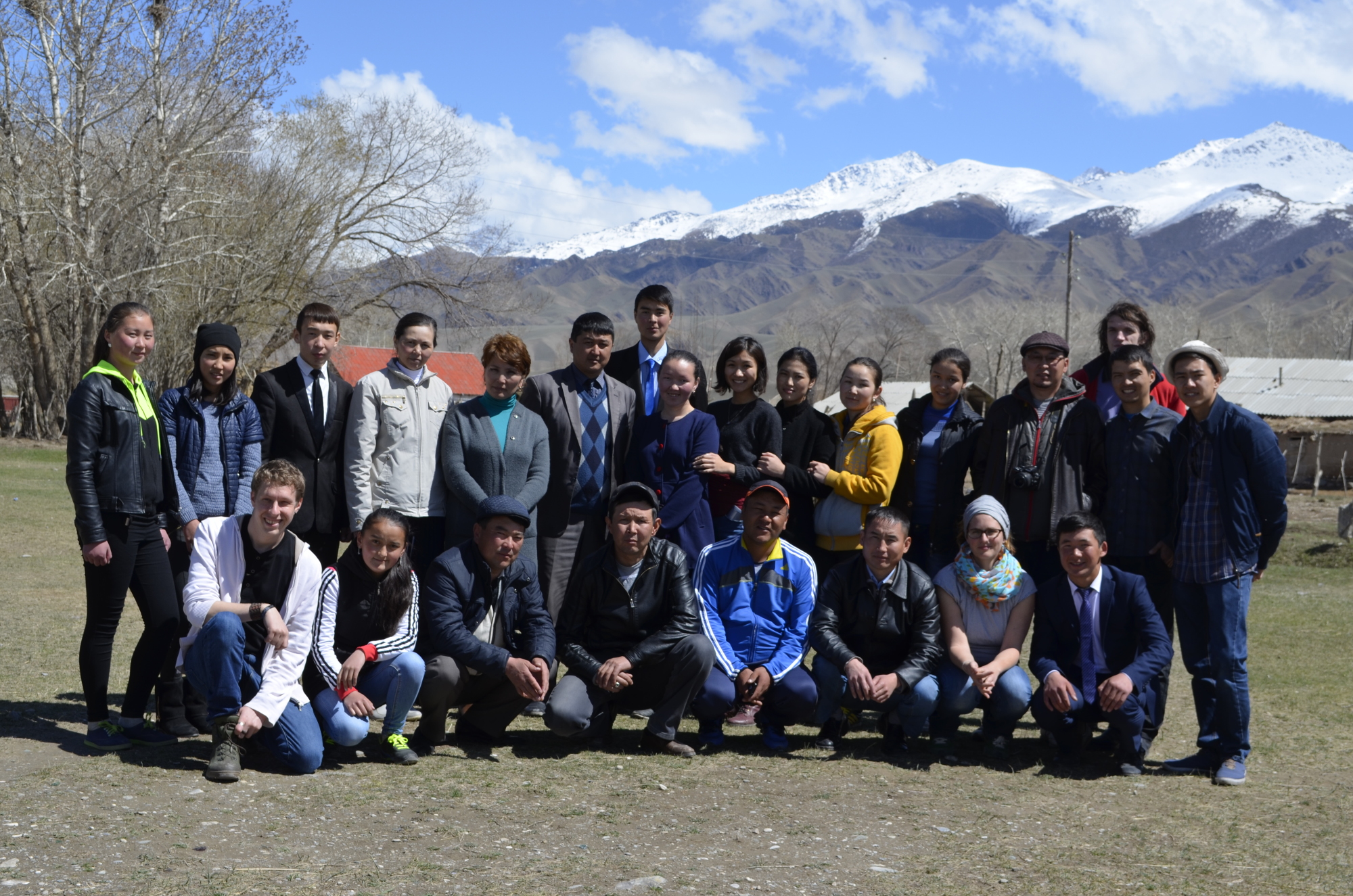Guest post by Aline Rosset, University of Central Asia:
The Kyrgyz Mountains Environmental Education and Citizen Science project aims at developing simple tools and activities for teachers to learn and conduct scientific investigations on the water resources around their village, and make the collected data publicly available. The kids will analyse water quality, water flow, and map all objects related to water in their community. As a basis for visualizing and mapping the water items, they will first map their community in OSM, which will further help them to locate the points where the data is being collected and visualize the results of their analyses.
But how to create
During a 3-days workshop 24 teachers, high school students and facilitators came together in Kazybek village, Naryn province, Kyrgyzstan to learn about OSM and how they can be the main actors to creating the map of 4 communities. In a second workshop in Kara-Oi village, Naryn province, Kyrgyzstan another group of 26 participants came together for 3 days, working on creating maps for 6 villages.
This is an overview of the mapping process
Creating a living map: How do we position ourselves according to were we come from?

Drawing a mental map of the village: How does each participant imagine his/her village?

Combining the pictures into one map: What important features were highlighted by whom?

Collecting data: Rocking field papers and OsmAnd notes in the rain.

Editing the collected data: Using JOSM and iD for adding buildings, street names, water pumps, rivers, amenities and much more.

 Felix Delattre, HOT member and our trainer, greatly managed to introduce
OSM in this remote context in Kyrgyzstan, sparkling the interest of all
the participants for open geo-technologies
Felix Delattre, HOT member and our trainer, greatly managed to introduce
OSM in this remote context in Kyrgyzstan, sparkling the interest of all
the participants for open geo-technologies
It quickly became clear that young and old participants have a great capacity to visualize their villages. The paper maps were already highly detailed and accurate. Data collection in the field added even more specific and geo-located information. Working on the computers brought in a new dimension, as most participants had little experience using modern technologies, and frequent power cuts and challenging internet connectivity added additional hurdles. But the high motivation and perseverance showed that it was worth the effort and everyone was enjoying the work.
In cooperation with teachers and students, 10 accurate, versatile, up to date and reusable village maps were created (see a before and after examples below). It was a great experience, thank you to all participants for active participation, motivation and for sharing their knowledge about the specificities of their villages!

And here the obligatory before-and-after-comparisons of the map in two villages:


This article also has been published on the website of the Humanitarian OpenStreetMap Team
Learn more about the Kyrgyz Mountains Environmental Education and Citizen Science project of the University of Central Asia in their report Through Water: Citizen Science in Naryn’s schools (PDF).